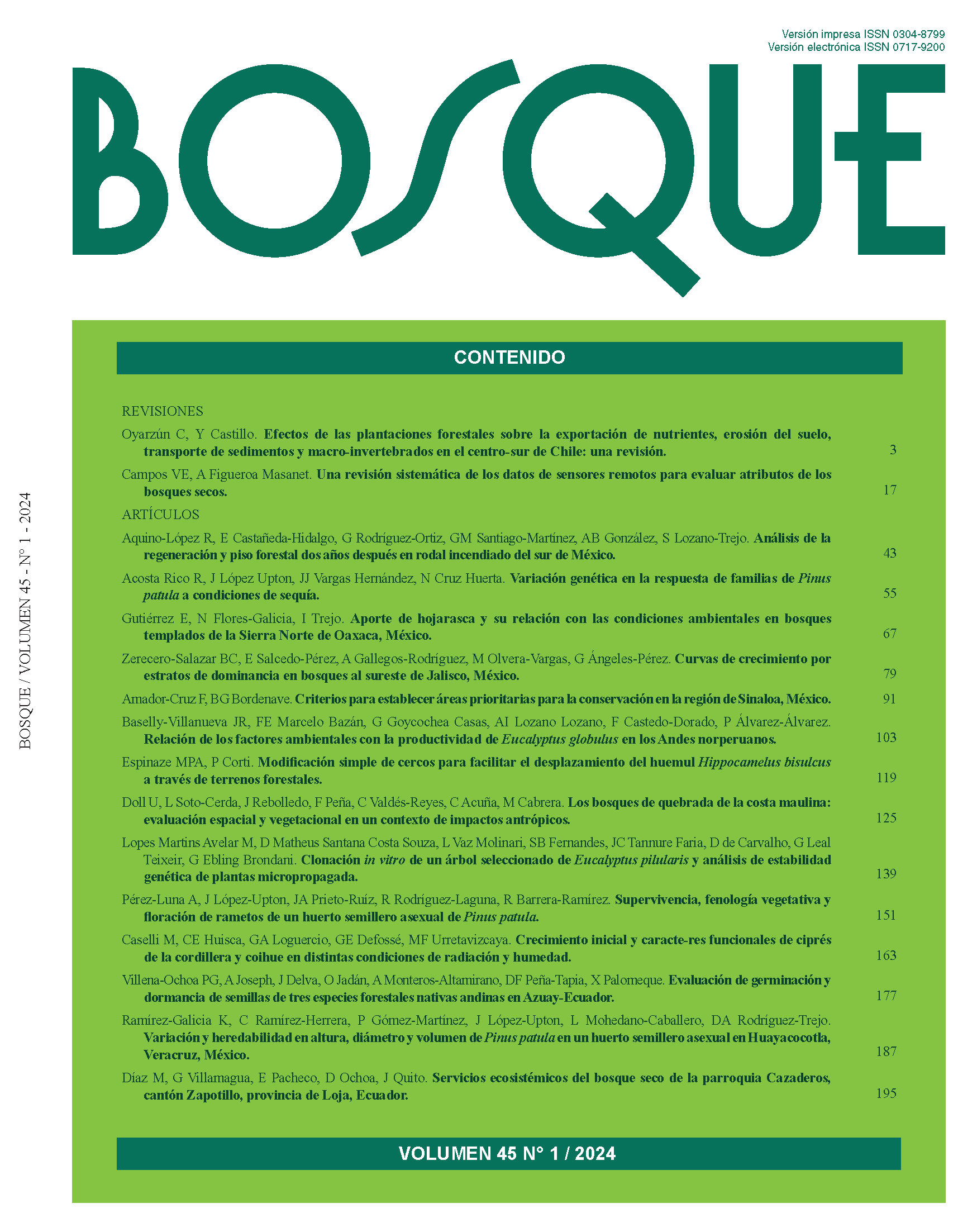In vitro cloning of a selected Eucalyptus pilularis tree and genetic stability analysis of micropropagated plants
Main Article Content
Abstract
Establishing vegetative propagation techniques to promote the rejuvenation/reinvigoration of genotypes is essential for the rescue of adult trees of the Eucalyptus genus used in species and provenance tests. The aim of this study was to evaluate the induction of epicormic buds and shoots in pruned branches and the in vitro establishment, multiplication, genetic fidelity, and elongation of three 44-year-old Eucalyptus pilularis selected plants. M1, M2 and M3 represent selected plants. M1 produced the highest number of epicormic buds, number of shoots, and with the lowest rate of tissue oxidation and non-reactive explants. In the establishment stage, M3 exhibited the lowest contamination percentage, number of shoots, and shoot length. The emission of shoots occurred only for M3, and it was the unique genotype subjected to the other stages (i.e. multiplication, elongation, and rooting). In the multiplication stage, the highest vigour and shoot length values of were found in the 15th subculture. Phenolic oxidation had its highest value in the 12th subculture, decreasing from the 13th. The highest value for number of shoots was found in the 11th subculture. No polymorphism was observed in the selected plant (M3) and the clonal plants obtained in the 15th subculture. For shoots elongation, the use of culture medium containing 0.10 mg L-1 BAP and 1.00 mg L-1 NAA provided the lowest means for oxidation, and the highest for vigour, number, and length of shoots. The emission of adventitious roots was observed, demonstrating that, through micropropagation, it was possible to induce the competence to root the material, even at an advanced ontogenetic age.


 https://orcid.org/0000-0001-6790-685X
https://orcid.org/0000-0001-6790-685X